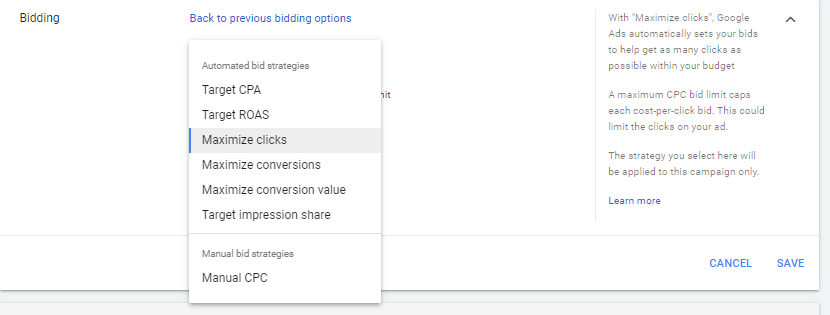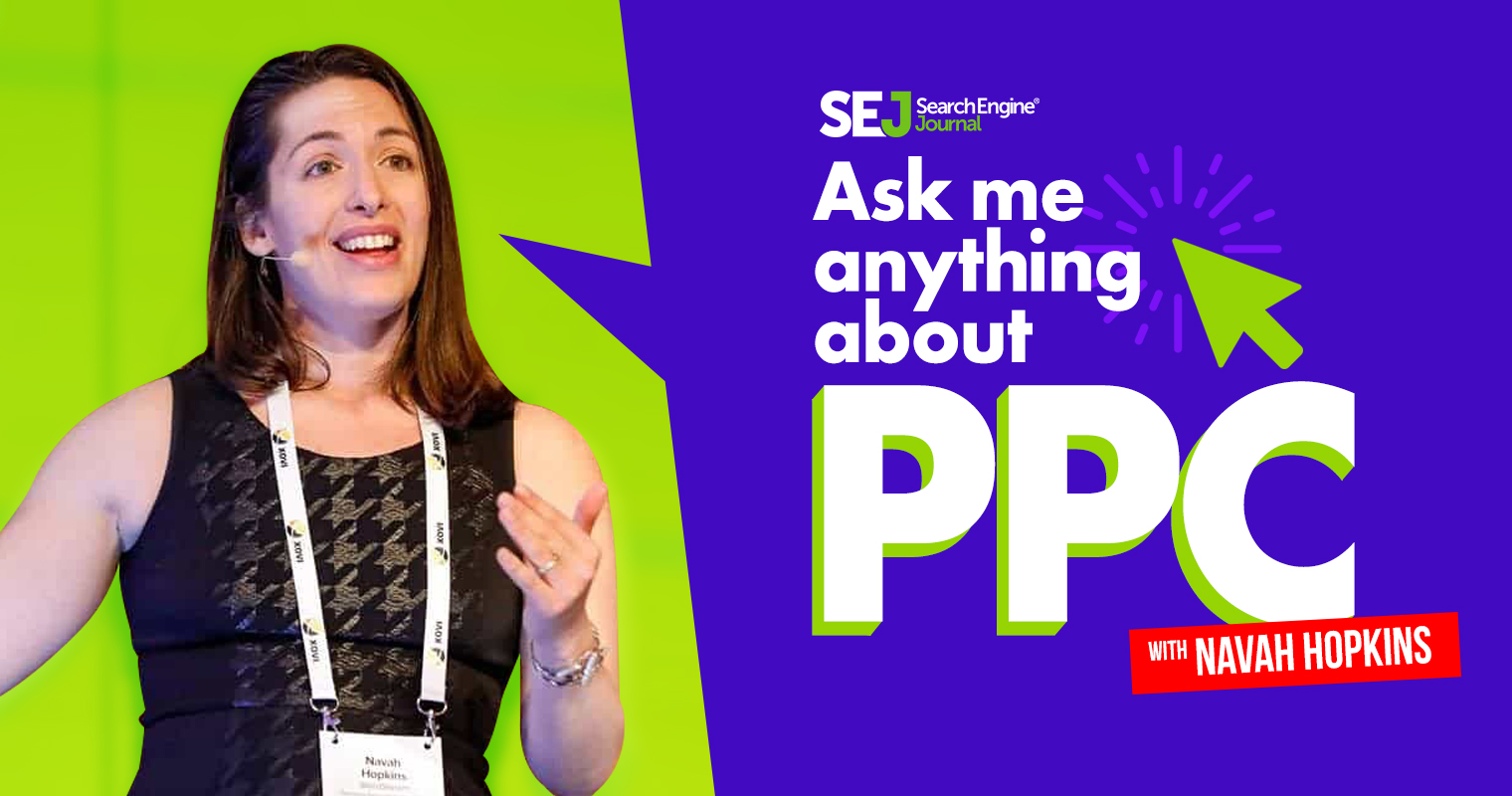One of the most crucial parts of pay-per-click advertising is how you determine what to pay per click.
In this installment of Ask Me Anything About PPC, we’ll tackle this question from Suleman in Lawrenceville.
“Which is the best bidding strategy since Google continues to add new bidding strategies-Smart bidding, Manual CPC, CPA, ROI, Max Conversion? I tested CPA and Manual CPC and faced challenges with CPA. The CPA campaigns starts performing well then as time goes it slows down drastically. Manual CPC always has been my favorite. I understand that the bidding strategy is based on your company goals and return on your investment but Any bidding strategy is your favorites?”
Spoiler: The answer will be it depends.
In order to answer this question, we’ll need to break down each bidding strategy by:
- Objective: What each bidding strategy focuses on.
- Function: How it will adjust bids to meet the objective.
- Pros and cons.
Once we have this information, we can come up with the “best” bidding strategy for us in the moment we need it.
Bidding strategies are broken up into three core families:
- Smart bidding: Conversion-based.
- Auto bidding: Function-based.
- Manual: Human-based.
While all bidding strategies have some degree of human input (budget/bid caps/goals/etc.), only manual bidding fully embraces humans owning the task.
It’s worth noting that Google makes it hard to choose manual bidding, which can be found here:

Update: Google announced that Target CPA and Target ROAS will no longer be available as of April 2021. They are consolidating their functions under Max Conversions and Max Conversion Value. Target CPA’s function will live on in being able to set a target in the Max Conversion bidding strategy, as will Target ROAS in Max Conversion value.
As the functions of these strategies remain effectively the same, we are leaving the old descriptions up.
Target Cost Per Acquisition (CPA): Risk-Averse Maintenance Mode
Objective
Spend the stated daily budget, while driving as many conversions as possible at the requested CPA.
Function
This bidding strategy won’t chase volume or differentiate between conversions of higher/lower value.
It will strive to bring in conversions at the requested CPA.
This means you may have some conversions at a higher CPA, as well as conversions at a lower CPA.
While there isn’t an official conversion threshold, most campaigns need at least 60 days of accurate conversions coming in around the CPA you will ask for.
Ideally, you’ll also have at least 15 conversions during this period.
Pros
- If you have a proven account, and all conversions are worth the same, this strategy is great for consistent maintenance mode.
- Brands that have hard cost per lead (CPL) maximums will have more control over that metric than on any other bidding strategy.
- Google no longer requires a set number of conversions in a 30 day period to run.
Cons
- Because it can’t differentiate between conversion values, you may need to create more campaigns (with unique budgets) for parts of the business based on margins.
- Volume will be impacted as the ad network passes up potential prospects to bring you conversions at your requested CPA.
- Depending on other settings (budget, targets, etc.), this strategy has a high risk of under-bidding/spending and can only be reliably used once a campaign has been running for a while.
Takeaway
Useful in legacy campaigns that are expected to serve a single goal with an agreed-upon value.
Not ideal for exploring new markets/services, or for brand new accounts.
Target Return on Ad Spend (ROAS): Business Acumen-Driven Bidding
Objective
Invest the budget in prospects who have the highest chance of converting at the highest value.
Function
Target ROAS is a hero among bidding strategies because it focuses on conversion value over volume.
A prerequisite of the strategy is setting up conversion values for each conversion (I prefer to do this through analytics).
Instead of setting a CPA goal, advertisers set a ROAS goal (usually at least 300X).
Google requires at least 15 conversions in a 30 day period to run – I’d encourage you to wait till you have at least 30-50.
Pros
- Budget is invested where it can do the most good, balancing volume and ROI.
- Enables more seamless reporting through profit entering the equation.
- No longer requires hundreds of conversions, making it accessible to lead gen as well as ecommerce.
Cons
- Requires knowledge of business operations to give conversion values – could be an obstacle for newer businesses.
- Due to the conversion requirement, cannot be used right away.
- This strategy will underspend or overspend if the ROAS goal, budget, and keywords/targets aren’t aligned.
Takeaway
Target ROAS is where we all want to get to, however, some of the requirements preclude newer businesses/novice marketers.
*Max Conversion Value behaves the same (just no conversion thresholds or goals).
Maximize Clicks: Hungry for Volume & Data
Objective
Learn how much my desired keywords cost while driving as many clicks as possible.
Function
This bidding strategy will bring the volume, focusing on clicks over conversions.
Advertisers can set a bid cap (I recommend 10% of the daily budget), or leave it open (don’t do this).
If you use this strategy, uncheck Search Partners and Display in Search campaigns, otherwise, the budget might be misdirected to lower value placements.
Be sure campaigns only ave one strategic focus (not mixing branded and non-branded ideas), otherwise high volume ideas could steal budget from lower volume ideas.
Pros
- Doesn’t require conversions to function.
- Good way to ramp up campaigns quickly.
- Learn which keyword concepts fit and at what cost.
Cons
- Focuses on cheap volume over profit (meaning higher value prospects could lose out on your marketing budget).
- If the keywords chosen are too expensive, you could end up with no volume at all.
- Inherently requires more negative work.
Takeaway
Great strategy for early days/low search volume industries, but not a long-term strategy.
Maximize Conversions: Everything Is Worth the Same ‘Button Mashing’
Objective
Drive as many conversions as possible (regardless of value or cost per lead).
Function
Ad network will attempt to drive as many conversions as possible within the given budget.
They won’t pay attention to the conversion action or repeat rate.
This bidding strategy can only be used if you 1000% trust your conversions and only include high-value conversions.
Pros
- Balances volume and value.
- If conversions are worth the same, great for consistent growth.
- Doesn’t require a conversion threshold.
Subscribe for Daily Search Insights
AI, PPC, and digital marketing news distilled to fuel success. Join the other 75k marketers!
Cons
- This strategy will miscalculate budget, if conversions aren’t working the same or if there’s double counting.
- It will spend the budget with no consideration for ROAS (return on ad spend).
- If you don’t have any conversion actions set up, you can’t run the strategy.
Takeaway
While amazing at delivering volume for simple conversion paths, it’s a messy strategy for complex consumer journeys.
Target Impression Share: Data Acquisition Ego Bidding
Objective
Achieve desired impression share in the desired location within the budget.
Function
Target impression share asks advertisers to specify a percentage goal, along with location.
Be sure to choose at least 60% at the top of the page.
Choosing anywhere on the first page can cause “false positives” on impression share + auction price.
Bid caps should not exceed 10% of the daily budget. If impression share has been a problem, test 15% above your average CPC.
Pros
- Campaigns requiring high impression share (i.e. branded) can be on “autopilot”.
- Learn whether your desired keyword concepts fit the budget.
- Helps mobile-oriented campaigns secure ideal placements (#1 spot).
Cons
- No focus on clicks or conversions.
- Risk of bidding war on unproven terms.
- If keywords/targets aren’t aligned, could lead to low/no volume.
Takeaway
Great for branded/competitor campaigns and early days campaigns, however not a winning strategy for proven conversion campaigns.
Manual Bidding: Micromanager’s Paradise
Objective
Advertiser controlled bids, leveraging bid adjustments over bidding goals.
Function
Manual bidding requires unique bids for each keyword. These bids can be conservative (closer to the top of page bid), or aggressive (bidding for the absolute top or higher).
Advertisers have access to the following bid adjustments:
- Device
- Audience
- Location
- Time
The more aggressive the bid, the less aggressive the bid adjustment.
It’s important to note most bid adjustments are only available as exclusions or will adjust the TCPA/ROAS on auto/smart bidding.
Be sure to check your adjustments as you switch between the bidding strategies.
Pros
- Ultimate control.
- Audience bid adjustments allow for precise message mapping.
- No official learning period to worry about.
Cons
- Deprived of the 60+ signals ad networks use in auto/smart bidding.
- More manual work to monitor and update.
- Easy to overbid by including too many bid adjustments (they’re cumulative).
Takeaway
Great for seasoned marketers and those who want to layer in their own ideas on the perfect prospect.
So Which Is the Best?
I tend to toggle between manual bidding, max clicks with bid caps, and target impression share in the first 30-60 days of a campaign.
Once I’m able to unlock enough conversion data I trust, I’ll usually switch to TROAS or Max conversions (I’m highly regimented in conversion actions and only include high-value events).
It all depends on the client’s goals and how much they’ve bought into volume over value leads.
Have a question about PPC? Submit via this form or tweet me @navahf with the #AskPPC hashtag. See you next month!
More Resources:


